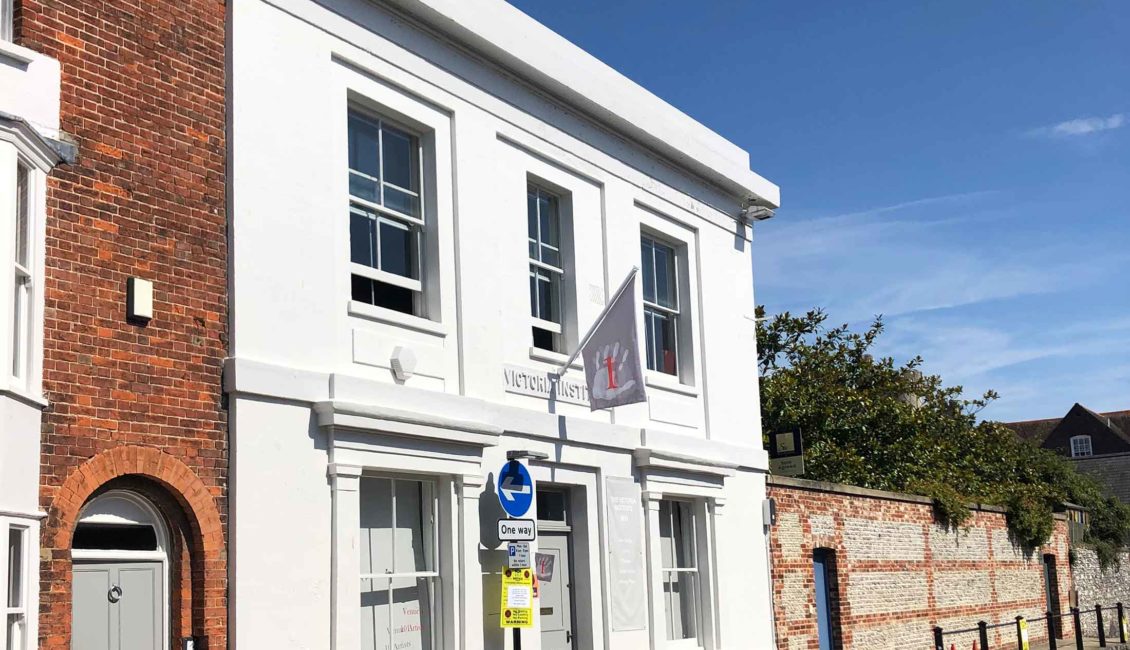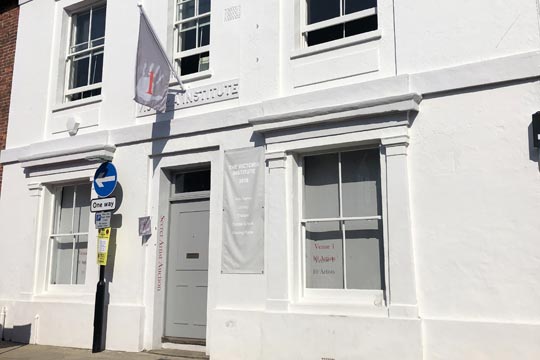
Savings bank, snooker hall, laundry, library, Sunday lunch club, dance hall, theatre, yoga studio, art gallery… The list goes on and on.
The Victoria Institute, or The Vic as she is affectionately known around Arundel, has had more lives than a cat. And with a little (for which read, a LOT) help from her friends, she is bracing for an exciting future…
The idea was a good one. If workers could save even a small portion of their earnings, they could move up in life.
The result was the Arundel Savings Bank, built on the site of two former cottages on Tarrant Street, which opened its doors in 1847.
Did the location, opposite one of the busiest breweries and pubs in town, even then known as The Eagle, sway some would-be savers from depositing their wages come Friday?
We will never know.
The bank closed in 1896, and its premises and fittings were sold for £550 to a committee made up of the mayor, aldermen and the burgesses of town; the forerunners of the Arundel Borough Council.
This committee wanted a way to celebrate and commemorate the 60th anniversary of Queen Victoria’s reign; which is why in 1897 the former Arundel Savings Bank was reborn as The Victoria Institute.
Again, this was an attempt to ‘better working folk’. Newspapers were laid out in reading rooms, and a washroom was available for laundry. At some point before 1912, a public bathhouse was built at the back of the building. From 1925, the building housed a new Country Library Service.
It wasn’t long before fun of a different kind filled The Vic’s four floors. “The feeling is that, by this stage, the Institute was more of a private member’s club,” explains Victoria Institute chair of trustees John Paton. “It was probably men only, with a ground floor billiard room, darts and a successful bar.”
“Over the years, it became more inclusive, and we know that by the 1950s The Vic was a community hub. For a fee, members enjoyed weekly dances in what is now the Red Room and was then a bar and dance hall. The snooker room was moved up onto the top floor, which is now the studio of resident artist Frances Knight. There were Sunday family meals, with films shown for children, while their parents got on with the serious business of eating and drinking.”
“Over the years, it became more inclusive, and we know that by the 1950s The Vic was a community hub. For a fee, members enjoyed weekly dances in what is now the Red Room and was then a bar and dance hall. The snooker room was moved up onto the top floor, which is now the studio of resident artist Frances Knight. There were Sunday family meals, with films shown for children, while their parents got on with the serious business of eating and drinking.”
John Paton
After the 1960s, The Vic was no longer a focus for town’s social activities, and its fortunes dwindled. Despite receiving Grade II listed status for the grand frontage in 1971, work was badly needed to repair the roof, walls and guttering; the loos were failing, and the central heating was beyond servicing.
In the early 2000s, as support declined the building was less used for several years. Only the tireless work of a passionate volunteer group kept The Vic from closing completely.
“When I became involved, the roof leaked like a sieve,” explains John. “In 2014, we volunteers, known as The Friends of The Vic, established a Limited Company and raised funds from both West Sussex and Arun District councils, and the Heritage Lottery Fund.”
The Vic achieved charity status in 2016, and the building has slowly been brought back from the brink. The exterior was redecorated in 2018, the interior was repainted in 2019, and the central heating was re-activated.
“We cleared numerous skips of rubbish from the cellars and courtyard. “We also managed to pay off outstanding debts earlier this year. And, we have just redecorated the downstairs loos. They are now the finest in Arundel!”
John Paton

